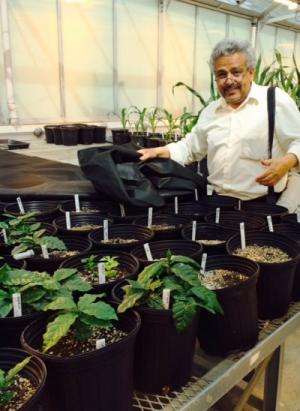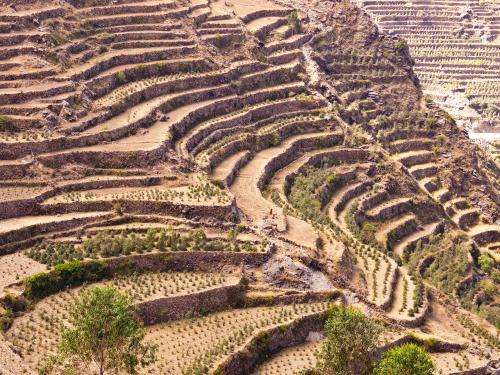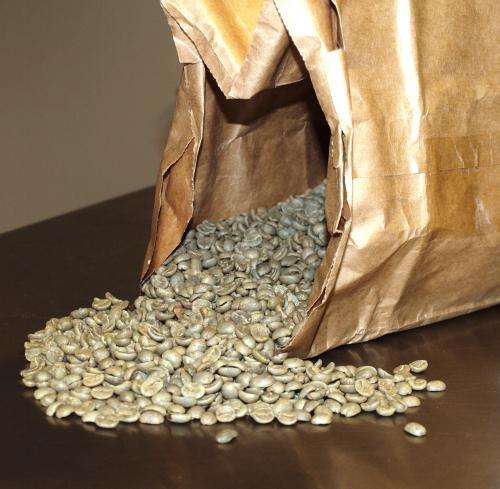Shedding new light on coffee

World Coffee Research, part of the Norman Borlaug Institute for International Agriculture at Texas A&M University in College Station, is hoping to shed new light on the origin of Yemeni coffee through a genetic diversity study in conjunction with Sana'a University of Yemen.
Dr. Amin Al-Hakimi, a professor of plant breeding in the faculty of agriculture at Sana'a University and a Fulbright visiting scholar at Texas A&M, along with others, is examining the genetic diversity of "exceptional landraces" of coffee from the Republic of Yemen, using a technique known as near infrared spectroscopy.
Near infrared spectroscopy uses the near-infrared region of the electromagnetic spectrum and results are based on mathematical relationships between spectra and reference data.
Experts consider near infrared spectroscopy a versatile, accurate and non-invasive analytical technique. It has been widely applied in agriculture to help determine the quality of agricultural products such as meats, vegetables, fruits and dairy products, as well as to quantify the composition of agricultural products.
The project already has attracted the attention of Mokha Origin, a startup based in Cambridge, Mass. at the Harvard Innovation Lab.
Mokha was formerly the principal port for Sana'a, the capital of the Republic of Yemen, and for centuries was world-renowned as a source of distinctive, high-quality coffees.

"We are excited to help Mokha Origin test if near infrared spectroscopy can be used to develop a traceability system for coffee," said Dr. Leo Lombardini, deputy executive director of World Coffee Research and associate professor in the department of horticultural sciences at Texas A&M. "If successful, this technique could represent an important resource for producers and the coffee industry as a whole."
Working with the Mokha Origin co-founder and researcher Edward Kenney, measurements of the reflectance of green coffee samples from Ethiopia and Yemen were taken in the lab of Dr. Seth Murray, an assistant professor in Texas A&M's soil and crop sciences department and World Coffee Research collaborator.
According to coffee industry experts, historically the practice of blending Yemeni beans with cheaper coffee from Ethiopia was believed to be widespread and lessened the perceived quality of the coffee in the marketplace.
"In the lab, we measured the reflectance of green coffee samples from Ethiopia and Yemen," Murray said. "The near infrared spectroscopy did a near-perfect job of helping us determine which coffee was from which of the two countries, based on the spectral signature, even though the coffees have fairly similar signatures."
Murray also ran samples from a Central American coffee-growing country and these too had a unique spectral signature that was significantly different from those of Yemeni and Ethiopian coffees.
"Our hope is to create a database and testable model to ensure the origin of our coffee," Kenney said. "With this tool, the Yemenis themselves will soon be able to protect and build their national brand of high-quality coffee."

Mokha Origin is in the initial stages of this project, with twelve samples of what is expected to become a 200-plus sample database.
According to Kenney, even though still in the early stages the project already has received significant interest, including Mokha Origin recently being declared a finalist in the Harvard University President's Challenge. The challenge is an entrepreneurship competition in which they are have been selected as one of 10 finalists eligible for a $100,000 prize.
Coffee is generally grown in the equatorial tropics where even the smallest climate change can have an impact on crops, added Dr. Tim Schilling, World Coffee Research executive director. "The work being done here also holds potential for helping produce coffee trees that may better tolerate the effects of climate change."
World Coffee Research is nonprofit, collaborative research and development program of the global coffee industry. Its mission is to grow, protect, and enhance supplies of quality coffee while improving the livelihoods of the families who produce it, Schilling said. The program is funded and driven by the global coffee industry, implemented by coffee scientists worldwide and managed by the Borlaug Institute, part of Texas A&M AgriLife Research.
"We are delighted to be working with World Coffee Research and Texas A&M University's world-class scholars to develop and apply to Yemeni coffee this technical verification," Kenney said.
Provided by Texas A&M University




















